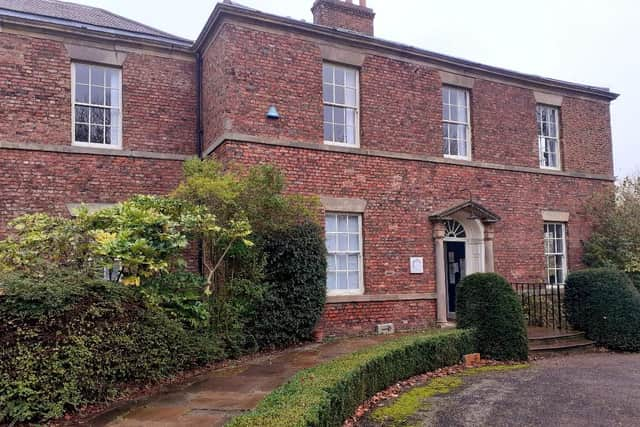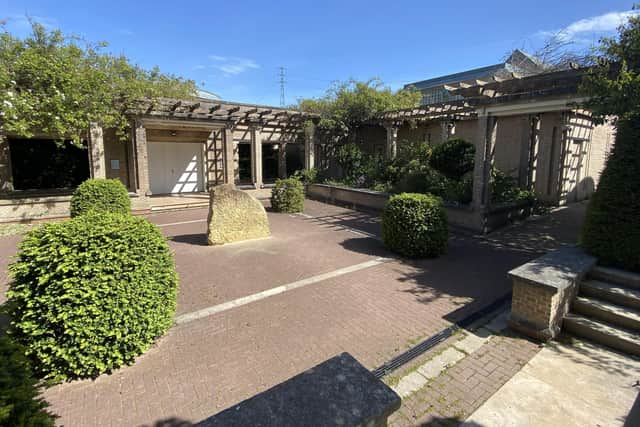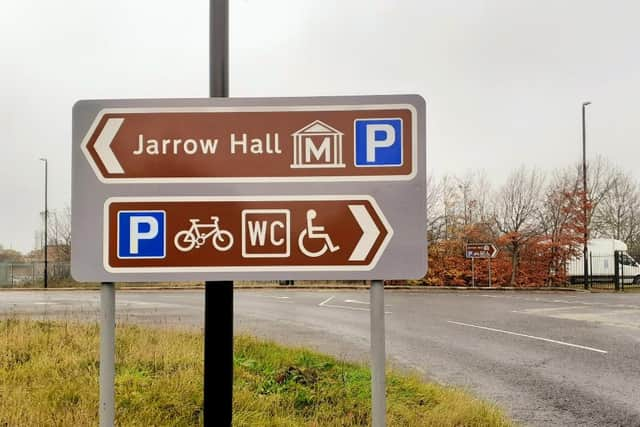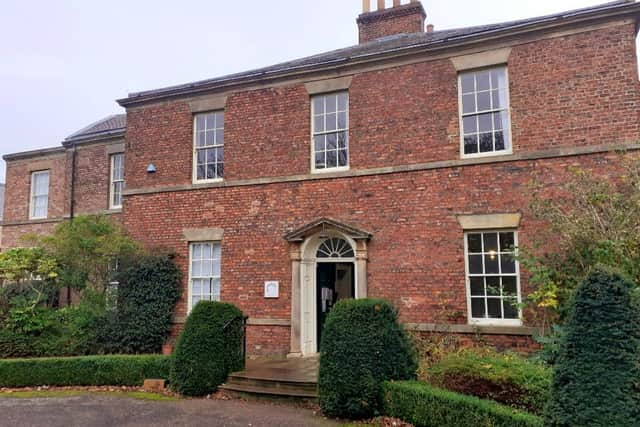Opening the door on the history of Jarrow Hall - home to some good guys, and one or two rotters, over the centuries
and live on Freeview channel 276
It was built by a mining shipbuilding tycoon Simon Temple, and has been enlarged twice since then, so it isn’t exactly as he planned. But nor does it look drastically different from the outside.
Advertisement
Hide AdAdvertisement
Hide AdIt has two storeys, and made of red brick with a roof of Welsh slate. It really is quite beautiful.


But the main point of interest is its occupants over the past couple of centuries.
Some were worthy citizens. Others were inveterate rotters. Even a couple of hundred years since they were here, you might want to boo a couple of them when you’ve finished reading this.
The man who built Jarrow Hall
Simon Temple was born in the village of Crake in North Yorkshire in 1759, the son of Simon Temple snr who was a shipwright, but declared bankrupt in South Shields in 1786.


Advertisement
Hide AdAdvertisement
Hide AdTemple jnr followed in his father’s footsteps and also became a shipbuilder, opening a yard at Thrift Street, South Shields, not far from where the Shields Ferry now docks.
Temple and his family were extremely wealthy and liked to spend. Simon’s son William was, for a time, resident at Hylton Castle in Sunderland.
Simon opened the Jarrow Colliery in 1803. However, he was also a philanthropist opening schools and a hospital in the town, as well as building miners’ cottages.
But as mentioned, he followed in his father’s footsteps. He too was declared bankrupt, in 1812. His Jarrow shipyard had taken orders for vessels desperately needed to fight the Napoleonic War. The yard failed to deliver and his opulent lifestyle was ended.


Advertisement
Hide AdAdvertisement
Hide AdHe disappeared from public view and reportedly had to live with his butler; although living with a butler wouldn’t have sounded like the last word in poverty to the average Jarrovian in the 1810s.
But while he was still in the black he built the wonderful mansion, Jarrow Hall. Sadly for him he was forced to sell his home, along with his shipping and mining interests to the Brown brothers, Thomas and Robert, who were from London.
Thomas and Robert Brown - not the nicest blokes


The brothers were not popular lads in Jarrow. Thomas lived with his family in Jarrow Hall, but that wasn’t enough to ingratiate him to locals. The Browns’ apparent indifference to miners’ safety eventually led to strike action in the 1830s.
A total of 84 miners had been killed in three separate explosions at Jarrow Colliery between 1826 and 1830. The Browns saw this as no reason to squander money on fripperies, such as adequate ventilation.
Advertisement
Hide AdAdvertisement
Hide AdIn 1841 Thomas died, to no great lament, and Jarrow Hall was inherited by his son and daughter-in-law, Thomas Drewett Brown (also known, confusingly, as Thomas Drewett-Drewett) and Isabella Chaytor (readers will be familiar with Chaytor Street in Jarrow, named after her family).
By 1851 the mine had flooded, so Thomas Drewett-Drewett simply abandoned it.
Isabella died in 1894 and was buried alongside her husband in the churchyard of St Paul’s. She is said to haunt Jarrow Hall as an inevitable ‘grey lady’. Every home should have one. Every stately home apparently does.
The occupants become nicer: their names sillier


Thomas and Isabella’s son, amusingly named Drewett Ormonde Drewett, inherited the Hall in 1873 but moved away, apparently to avoid fumes from an adjacent chemical works. Bless. The property was leased.
Advertisement
Hide AdAdvertisement
Hide AdDrewett Ormonde Drewett died childless in 1910; possibly a good thing considering the family’s history and the increasing silliness of their names. At this point the Hall had sat empty for four years. His uncle's grandson and Drewett’s adopted son, Alfred Chaytor, inherited the Hall. But he never lived in Jarrow.
To his credit, Chaytor donated what became Drewett’s Park (Charlie’s Park), between Jarrow Hall and St Paul's Church to Jarrow Town Council.
Alfred’s heart was in the right place. He allowed the Hall to become a fever hospital for a while. A fever hospital was specifically for patients with infectious diseases, although now is possibly not a good time to bring this up.
A ‘glorified shed’ returns to greatness
During the 20th century Jarrow Hall served a variety of purposes. In 1920 Chaytor sold it to the Mercantile Dry Dock Company, who in turn leased it to oil giants Shell Mex.
Advertisement
Hide AdAdvertisement
Hide AdIt was run by Jarrow Town Council from 1935 and for a time it was used as a nursery school.
During the Second World War it was an ammunition store where people could collect their gas masks. Then it was used for storage by Drewett's Park’s gardener and by the 1970s it was in some disrepair.
Even though it had been given Grade II-listed status in 1949, it was now a glorified shed. It was too fine a building for this to continue, so it was given to the St Paul's Development Trust who restored it and opened the Bede Monastery Museum in 1974.
In 1999 Jarrow Hall was completely refurbished as part of a £4million development, by then known as Bede’s World. It was officially opened by the Queen in September 2000.
Advertisement
Hide AdAdvertisement
Hide AdIt closed briefly due to funding issues in 2016. But after some high-profile complaints, notably from the broadcaster and culture-vulture Melvyn Bragg, it was reopened under the management of environmental charity Groundwork.
Bede’s World became the Anglo-Saxon Farm, Village and Bede Museum in 2017 and is a great Jarrow tourist attraction. The Hall opened as a cafe run by the Hive Coffee Company. The whole complex is referred to simply as Jarrow Hall.
Next time you’re in there, relaxing with a latte, give a thought to what’s been happening there in the last 235 years. There’s plenty to think about.